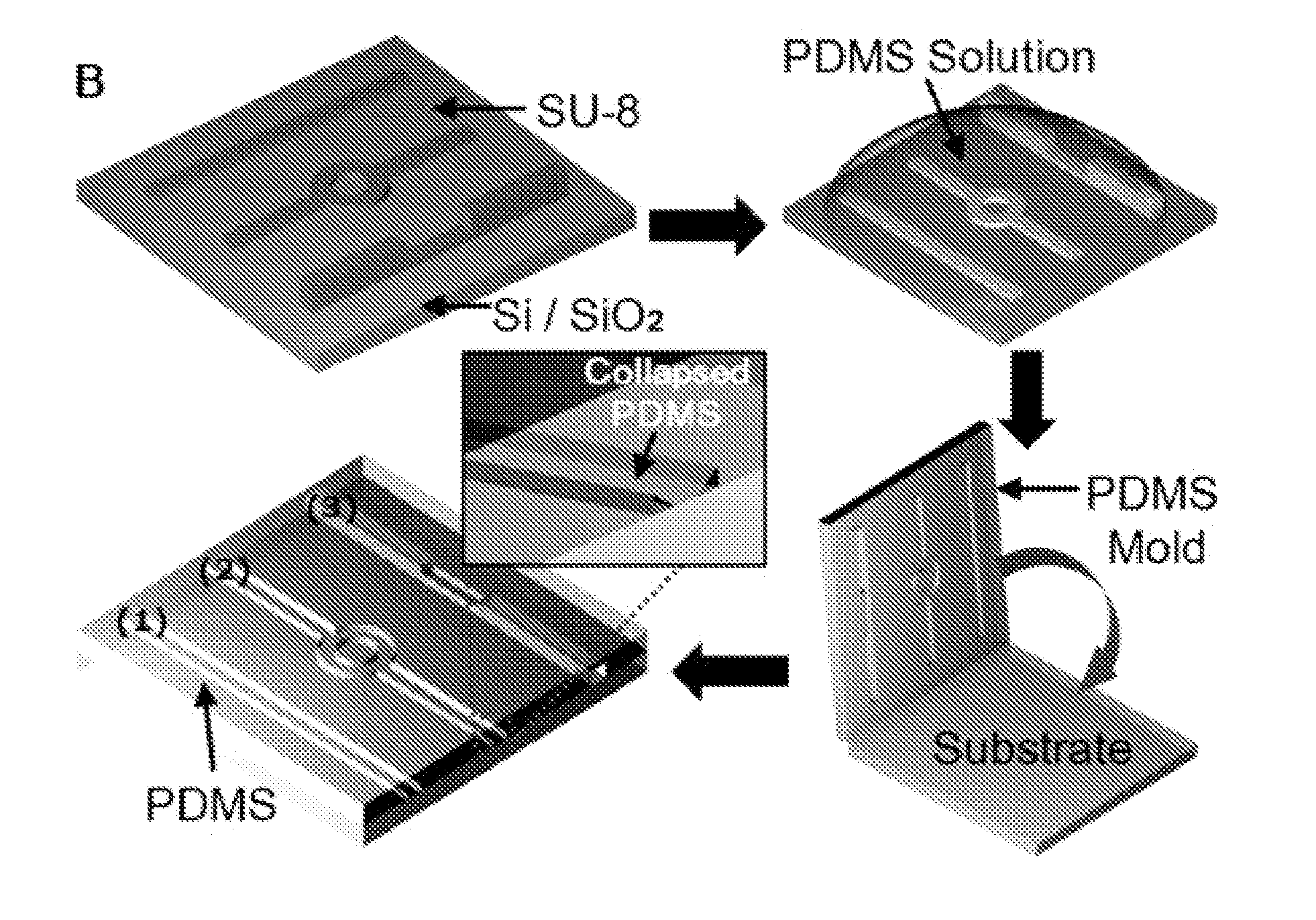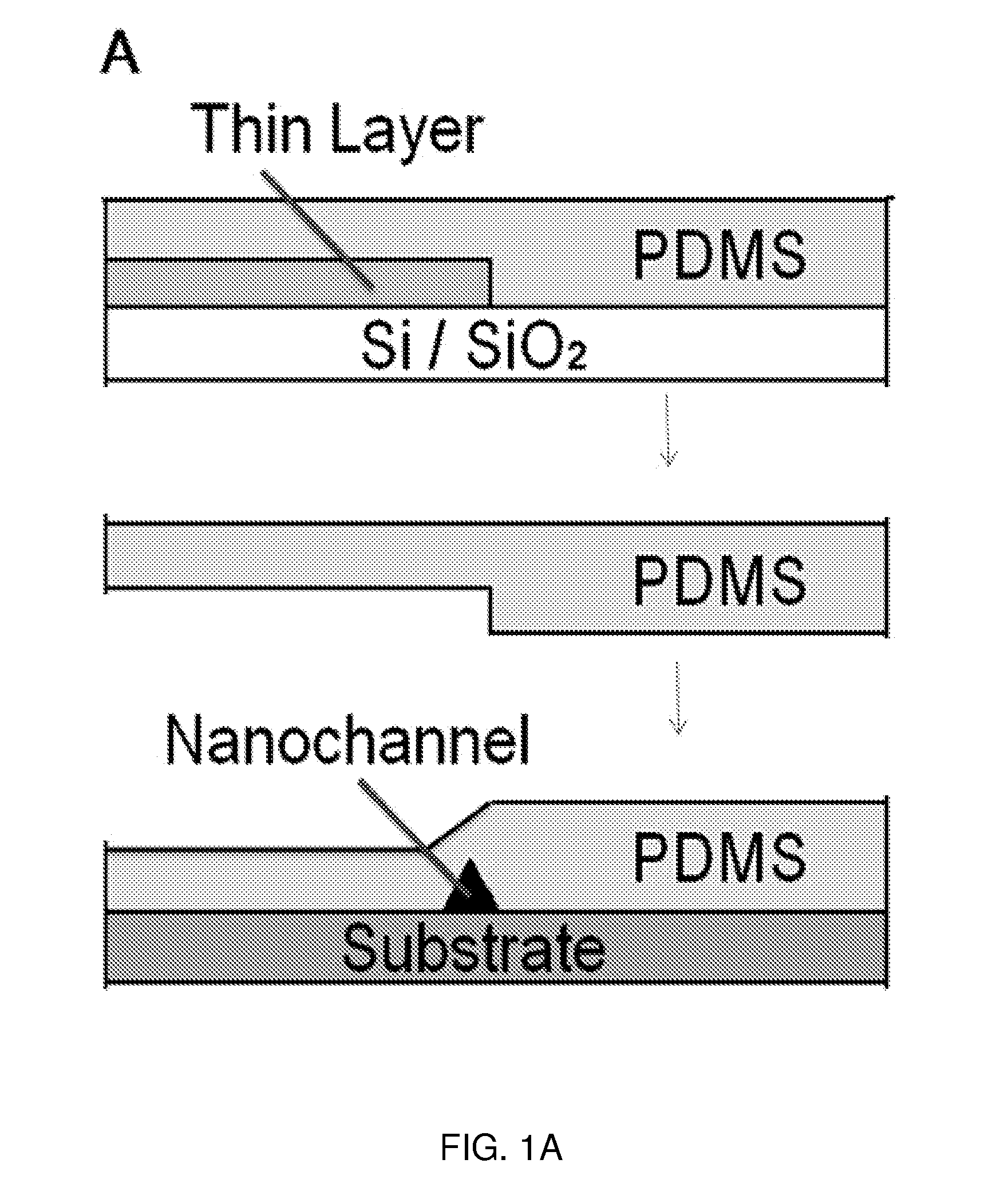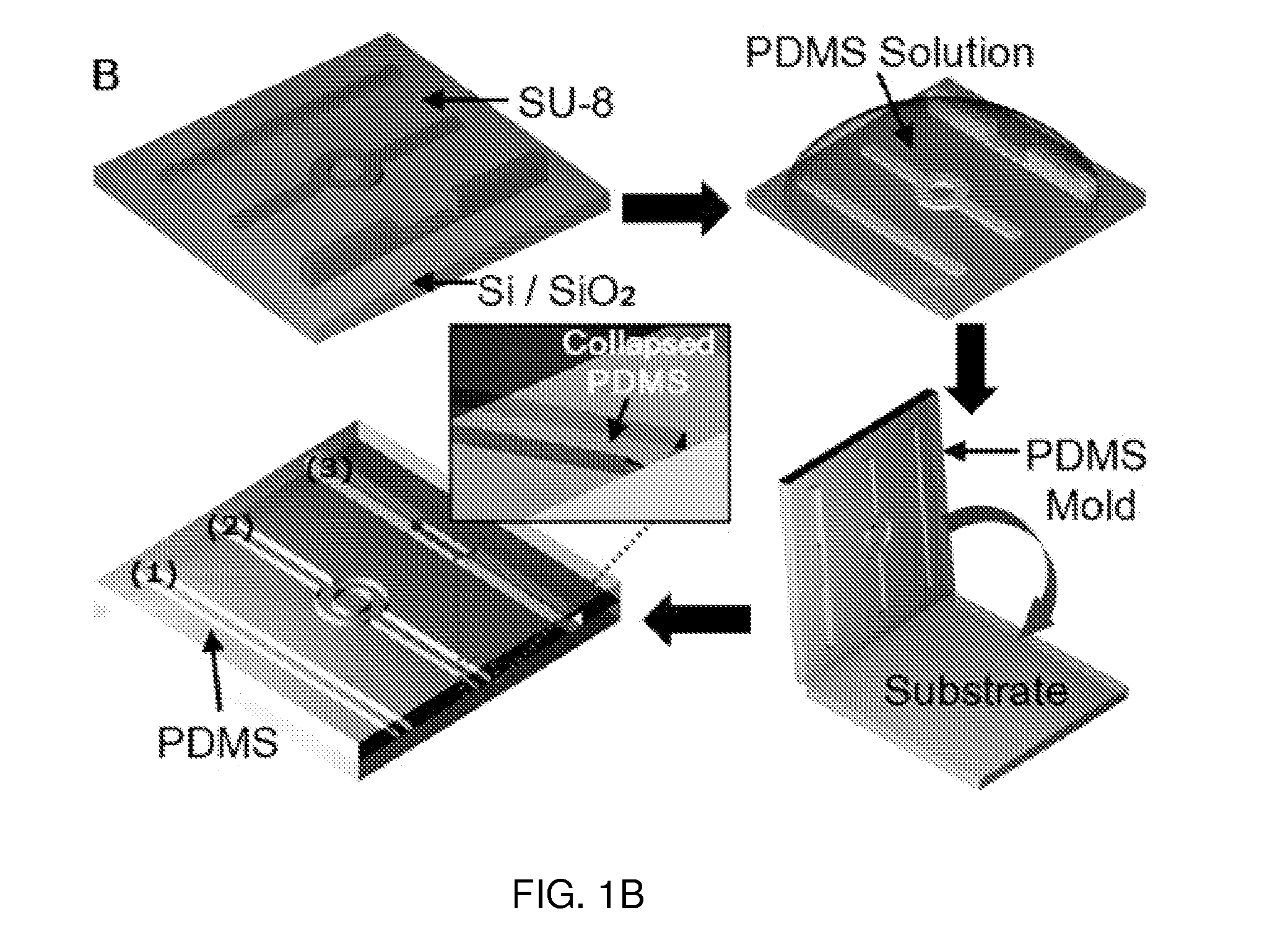Nanofilter devices using elastomeric micro to nanochannel interfaces and methods based thereon
a technology of nanofluidic systems and nanochannels, applied in the field of nanofluidic systems, can solve the problems of limited device complexity, low device complexity, and limited methods for rapid prototyping of nanofluidic systems
- Summary
- Abstract
- Description
- Claims
- Application Information
AI Technical Summary
Benefits of technology
Problems solved by technology
Method used
Image
Examples
example 1
6.1 Example 1
Method for Nanofluidic Device Prototyping Using Elastomeric Collapse
[0176]6.1.1 Introduction
[0177]Nanofluidics represents a promising solution to problems in fields ranging from biomolecular analysis to optical property tuning. Recently a number of nanofluidic fabrication techniques have been introduced that exploit the deformability of elastomeric materials like polydimethylsiloxane (PDMS). These techniques are limited in the complexity of the devices which can be fabricated, being able to only create straight or irregular channels normal to the direction of an applied strain. This example demonstrates a method for fabricating a nanochannel that comprises the step of controlled collapsing of a microchannel structure. As is demonstrated, this method converts the easy to control vertical dimension of molded elastomer (e.g., molded PDMS elastomer) to the desired lateral dimension of a nanochannel. Using the method for fabricating a nanochannel, complex nanochannel structu...
PUM
| Property | Measurement | Unit |
|---|---|---|
| height | aaaaa | aaaaa |
| height | aaaaa | aaaaa |
| height | aaaaa | aaaaa |
Abstract
Description
Claims
Application Information
 Login to View More
Login to View More - R&D
- Intellectual Property
- Life Sciences
- Materials
- Tech Scout
- Unparalleled Data Quality
- Higher Quality Content
- 60% Fewer Hallucinations
Browse by: Latest US Patents, China's latest patents, Technical Efficacy Thesaurus, Application Domain, Technology Topic, Popular Technical Reports.
© 2025 PatSnap. All rights reserved.Legal|Privacy policy|Modern Slavery Act Transparency Statement|Sitemap|About US| Contact US: help@patsnap.com



